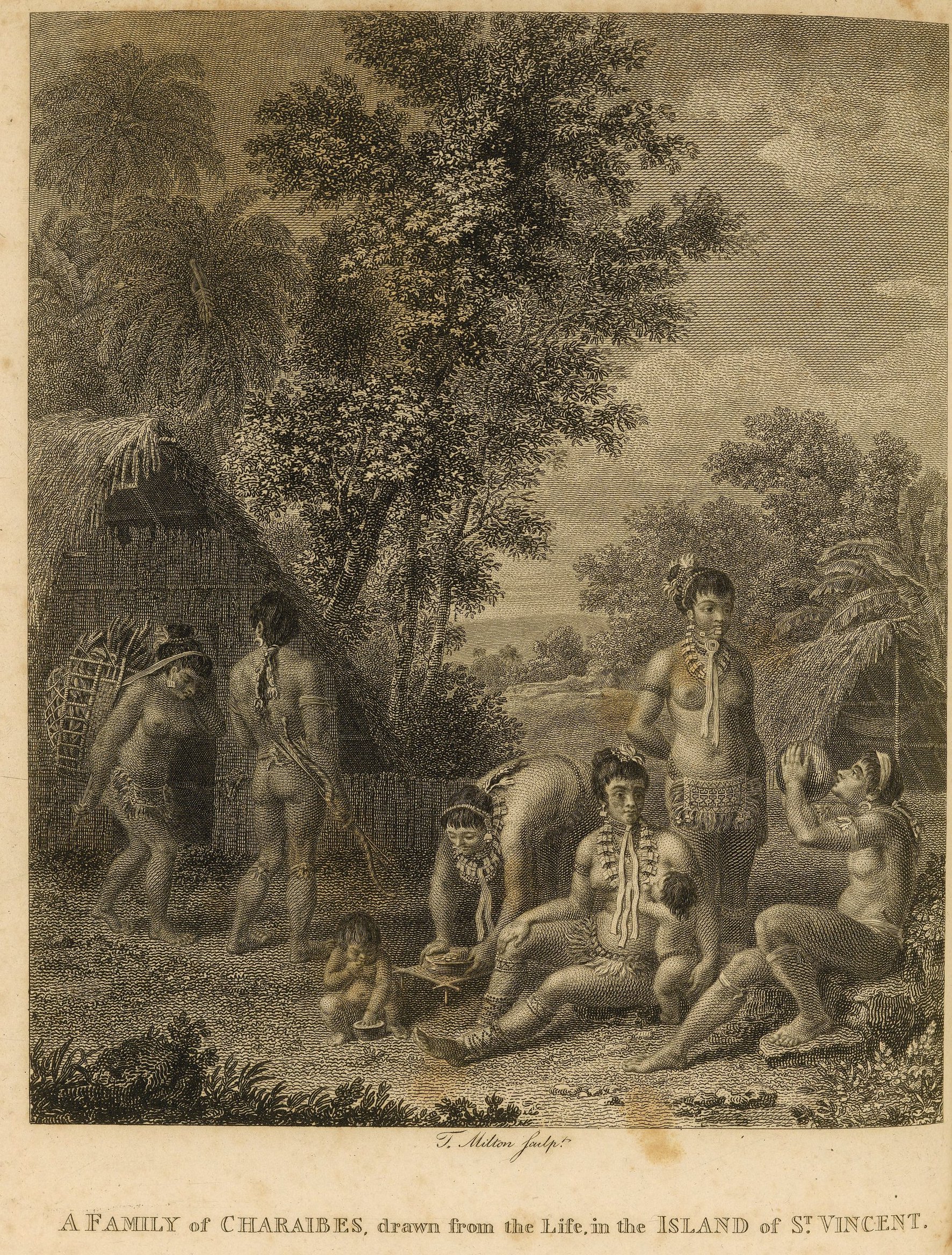Representations of Indigenous People: Carib Customs

"Chatoyer, the Chief of the Black Charaibes in St. Vincent with his Wives." Oil painting held in the National Library of Jamaica. Image sourced from www.slaveryimages.org, compiled by Jerome Handler and Michael Tuite and sponsored by the Virginia Foundation for the Humanities.
Carib Customs
The Case of the Caribs in St. Vincent is Reverend Dr. Thomas Coke’s plea to assist the Caribs of St. Vincent, articulated through a letter written by George Davidson. Davidson recounts his understanding of the black Caribs and describes their customs, habits, and the effects of having been under French servitude for a number of years. Davidson’s letter also describes the polygamous marriage practices, religious observations, cassava cultivation methods and other Carib customs.
A Peaceful Sunday at Home

Agostino Brunias' engraving "A Family of Charaibes, drawn from the Life, in the Island of St. Vincent," published in Bryan Edwards' The history, civil and commercial, of the British colonies in the West Indies in 1794. Image courtesy of the John Carter Brown library.
